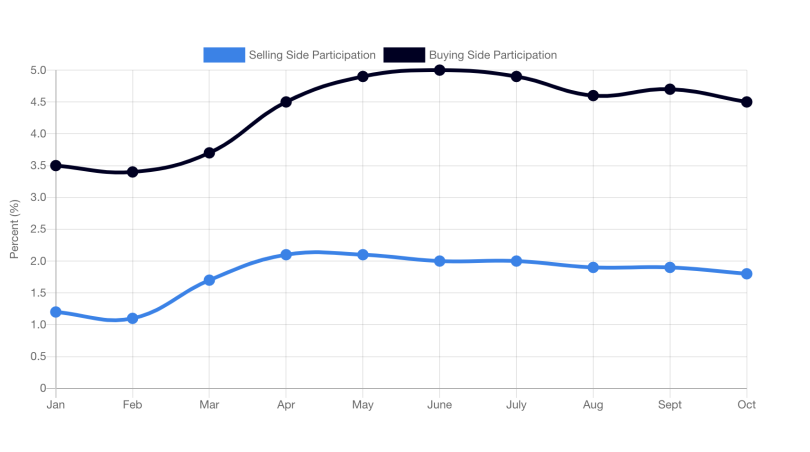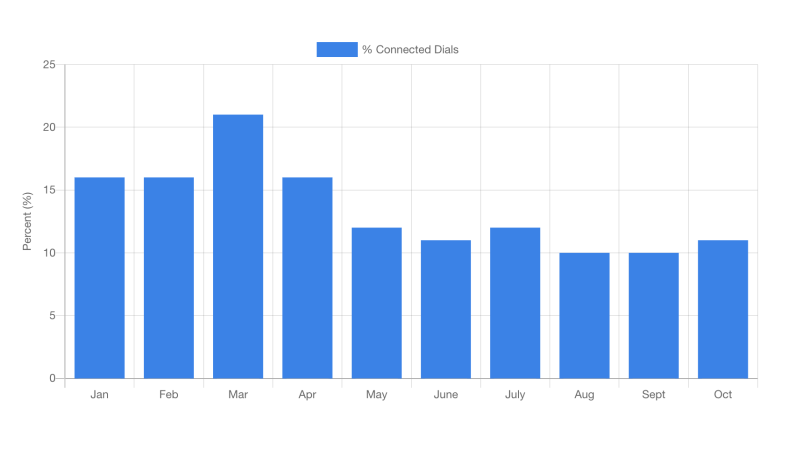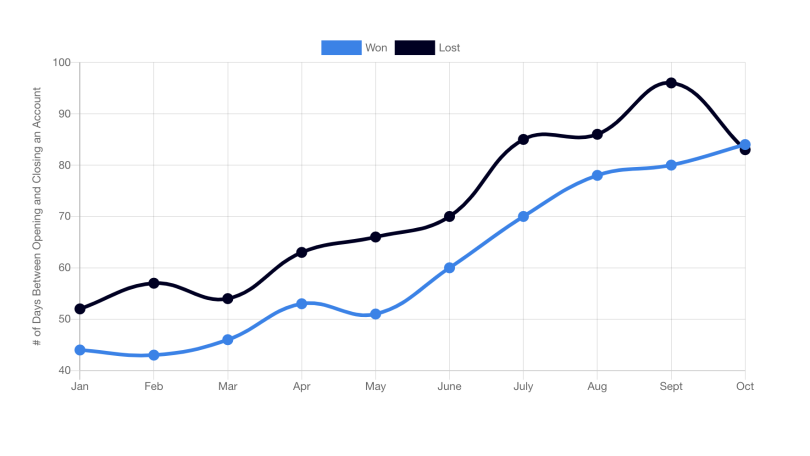Jim Benton joined Chorus.ai as its CEO during a time of uncertainty. In fact, he started on the day most everything changed — March 16, 2020.
By now, the course of events that started that day doesn’t need much repeating, especially as we continue to live it. Needless to say, Benton still hasn’t stepped foot in the sales-conversation-intelligence company’s office.
What’s been more important to Benton and Chorus.ai’s team has been figuring out the impact of those events on sales strategy.
Navigating sales in 2020 hasn’t been easy, as companies have frozen budgets and gone through rounds of layoffs. In an attempt to offer some guidance, Benton tasked his team with collecting and sharing insights on its trove of call data to help leaders understand what’s resonating with buyers.
“We found that there was a lot more empathy in the first part of a call.”
For 47 days, Benton conducted daily briefings with sales leaders and C-suite executives, sharing data insights and picking their brains about what they saw in the field.
As the company analyzed millions of calls, some early trends appeared. The data showed a 63 percent increase in call feedback and coaching on Chorus.ai, indicating that training could thrive outside the sales floor, Benton said. He was also inspired to see that product demos started two minutes later on average in sales calls.
“We found that there was a lot more empathy in the first part of a call,” Benton said. “That was actually encouraging. It was OK to ask people, ‘How are you doing?’”
Now, with three financial quarters in the books, Chorus.ai has analyzed 35 million anonymized sales calls and released a report that provides revenue operations insights on 10 topics that include C-suite participation, cold calling success rates, sales demo best practices and more. Here’s what the data says about sales during a time of uncertainty — and what may be to come.

More C-Suite Executives Are Showing Up on Sales Calls
During Benton’s daily briefings, he often asked sales leaders what they were doing differently to sell in a new economic environment.
One of the most common responses was that teams had shifted toward an ROI-centered approach. It was no longer enough to pitch a product as a nice-to-have, Benton recalled. The value of the software needed to be clear and provable to convince buyers.
This reflected a shift in buyer behavior that Chorus.ai found in its data. As economic uncertainty peaked in May and June, C-suite participation increased on sales calls. In particular, CFOs were showing up on call invites 92 percent more often than before.
“We’re seeing C-suite involved, so let’s take advantage of it. Let’s get them talking and use this data to run a more thoughtful sales cycle.”
While executive participation has dipped slightly since June as some industries bounce back, C-suite participation as a whole continues to be higher than it was in 2019 and the months prior to the pandemic.
As a result, winning a deal will still require being prepared to sell based on your product’s ROI. That means coming to meetings with questions for the C-suite executive and insights into the exact value the company can expect to see from your product.
Executive involvement isn’t necessarily a bad thing. In fact, engaging a CFO on a call leads to a 54 percent win rate, about 14 points higher than when one doesn’t attend a call, according to Chorus.ai.
“We’re seeing C-suite involved, so let’s take advantage of it,” Benton said. “Let’s get them talking and use this data to run a more thoughtful sales cycle.”

Cold Call Connection Rates Dropped From Q2 to Q3
One of the biggest questions for sales leaders at the start of quarantine was whether their reps should be cold calling customers.
It turned out to be the perfect time to call buyers. More people answered cold calls in March than in any other month this year, according to Chorus.ai. The connection rate for the month was 21 percent, compared to just 16 percent in February — perhaps a reflection of people’s desire to talk to other humans while working from home.
That spike, however, was short-lived. Connection rates dropped to just 11 percent in October, and fewer buyers are following up on voicemail messages. Benton said there’s been an increase in sales reps using email to connect, but cold calling can still be an effective outreach strategy in the work-from-home world.
“It still works,” Benton said. “That’s not a dramatic drop given that none of us are in the office.”
It’s on the sales leaders and trainers to make sure reps are strategic with their calls, have an efficient cold-call pitch and a voicemail strategy, according to Chorus.ai’s report. With fewer people picking up the phone, incorporating those strategies will give reps the best odds to convert the opportunities they do receive via cold calling.

It’s Taking Longer to Close Deals
While cold-calling success has dipped, sales cycles have lengthened.
Since customers are more cautious about making purchases, Chorus.ai found that deals now require more meetings and more time before a decision happens. In February, it took sales reps an average of 43 days from the opening of an account to win it. That number ballooned to 84 days in October.
“The gap should be short. We’re not jumping on planes, so we should be keeping weekly conversations [with buyers] when we’re winning deals.”
During those 84 days, sales reps now have to run an average of 4.6 meetings to win a deal, which is up from three in February.
It’s important sales leaders take that into account when assessing their reps’ work loads, Benton said. Reps aren’t just attending more Zoom meetings with buyers, they also need to keep in touch with clients in between those meetings. If they go seven days without sending the customer a message, they’re significantly less likely to win the deal.
“The gap should be short. We’re not jumping on planes, so we should be keeping weekly conversations [with buyers] when we’re winning deals,” Benton said. “And if the gaps get long, know that you’re at real risk of losing the deal.”
Moving Toward Stability During Uncertain Times
When Benton set out to make Chorus.ai’s call data more accessible to sales leaders, his hope was to help sales leaders navigate a period of uncertainty by identifying trends. Now, eight months later, the numbers have started to stabilize month to month, indicating that sales strategies aren’t changing as much.
“We’ve adjusted to our new norms, whether that’s dealing with COVID[-19] or other uncertainties.”
While Benton said it’s too soon to draw conclusions on how working from home has changed sales and buyer patterns, a return to a steady state in sales is a win in its own right.
“We’ve adjusted to our new norms, whether that’s dealing with COVID[-19] or other uncertainties,” he said. “People know that if they run certain plays, it’ll close deals. But there was a window there where we didn’t know if anything we did still worked because budgets were frozen and [companies were] firing. How do you break through that noise?”




